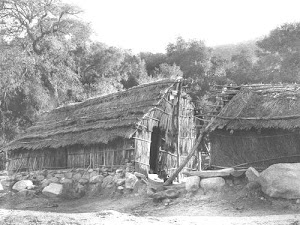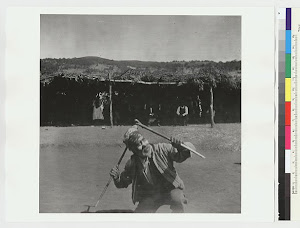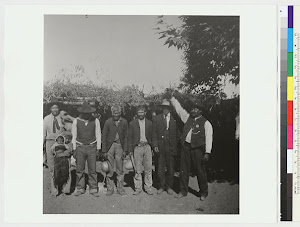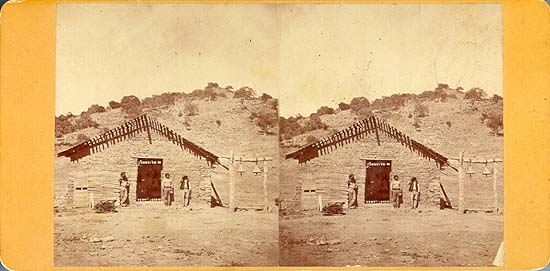DOWNLOAD PDF Funeral Services flyer.
Ernest Salgado, Sr.
(1920-2012)
http://www.californiaindianeducation.org/community/obituaries/2012/ernest_salgado_sr/
In Memory of Ernest Salgado Sr.
Soboba Tribal Elder
Ernest Salgado Sr. passed into eternal life on Monday, January 23, 2012 at his home on the Soboba Indian Reservation. His wife of 60 years, Fidelia succeeded him into eternal life.
Mr. Salgado was born on October 16, 1920 on the Soboba Indian Reservation. He is survived by, two brothers and three sisters, Henry “Sonny” Bentiste, William “Billy” Bentiste, Francis Bentiste Arres and Alice Bentiste Helms from the Soboba Indian Reservation and Nelia Salgado Heredia from the Cauhilla Indian Reservation: Six children, Ernie C. Salgado Jr., Hemet, CA, Robert J. Salgado Sr., Soboba Indian Reservation, Richard L. Salgado Sr., Palms Springs, CA, Lorraine Salgado Masiel, Hemet, CA, Francis Salgado Diaz, Soboba Indian Reservation and Rose Salgado, Soboba Indian Reservation,:14 Grandchildren, 43 Great-grandchildren, 13 Great-great-grandchildren and numerous nephews and nieces.
He attended the Valle Vista elementary school in Hemet in the late 20’s and Sherman Indian High School in Riverside and played on the schools championship baseball teams in the late 30’s.
Mr. Salgado was a World War II veteran serving in the U.S. Army. During WWII he served in five major combat campaigns including the Battle of the Bulge and the invasion of Normandy. He was awarded the Bronze Star and Silver Star Medals for bravery. He was also awarded the European-African-Middle Eastern Campaign Medal.
He was a strong advocate and supporter of the American Indian Rights and education throughout his life. As a tribal and community leader he served on the Soboba Tribal Council and was a Charter member of Ahmium Education, Inc., serving as the Vice-President of the Board of Directors since 1975. He was a life member of the California Indian Education Association.
SERVICES:
A Catholic Rosary will be held at the McWane Funeral Home in Hemet, CA at 6-7pm on Thursday, February 2, 2012. A Christen service will be held at 9am on Friday, February 3, 2012 at the Assembly of God in Valle Vista, CA followed by graveside services at the Soboba Tribal Cemetery. A traditional tribal fellowship dinner will be held at the Soboba sport complex after the graveside services. DOWNLOAD PDF Funeral Services flyer.
Obituary written and submitted by Mr. Salgado's son, Ernie C. Salgado, Jr., CALIE Editor in Chief and CEO.
Monday, January 30, 2012
In Memory of Ernest Salgado Sr.
Posted by
Karen Vigneault Librarian
at
8:41 AM
0
comments
![]()
Thursday, January 26, 2012
Encyclopedia of Life
I am hoping this site will help all our students in school from k-12 & our college students.
Encyclopedia of Life
http://eol.org/
The Encyclopedia of Life (EOL), a free, online resource of biodiversity information is working to bring together our collective knowledge. The mission of EOL is to increase awareness and understanding of living nature through an Encyclopedia of Life that gathers, generates, and shares knowledge in an open, freely accessible and trusted digital resource.
There is also the Biodiversity Heritage Library.
http://biodiversitylibrary.org/
The Biodiversity Heritage Library (BHL) is a consortium of natural history and botanical libraries that cooperate to digitize and make accessible the legacy literature of biodiversity held in their collections and to make that literature available for open access and responsible use as a part of a global “biodiversity commons.” BHL also serves as the foundational literature component of the Encyclopedia of Life (EOL). BHL content may be freely viewed through the online reader or downloaded in part or as a complete work in PDF, OCR text, or JPG2000 file formats. For help with downloading content, please see the Tutorials page.
To perform a simple search of BHL, enter an EXACT PHRASE such as "proceedings of the academy" (without quotation marks). Entering keywords such as "proceedings academy" will not return results.
For advanced search options, please use the Books/Journals, Authors, Subjects, Scientific Names, or Citation Finder (BETA) tabs above.
Posted by
Karen Vigneault Librarian
at
11:31 AM
0
comments
![]()
Tuesday, January 17, 2012
Tribe owes county $3 million, judge rules
EXCLUSIVE: Tribe owes county $3 million, judge rules
By EDWARD SIFUENTES esifuentes@nctimes.com North County Times | Posted: Saturday, January 14, 2012 9:00 pm | (2) Comments
A North County tribe was ordered last month to pay the county $3 million for failing to make payments for public safety and other services under an agreement signed in 2005, according to court documents.
The Santa Ysabel Band of Mission Indians struck the agreement with San Diego County in January 2005 as a condition of the tribe's gambling deal with the state.
The money was supposed to help pay for the off-reservation effects of the casino, including additional law enforcement, emergency and fire services.
The payments were also supposed to help pay for gambling addiction programs and the prosecution of casino-related crimes.
Santa Ysabel Casino opened in April 2007 but apparently failed to generate the kind of revenue the tribe anticipated.
According to the county, the tribe never made any payments, about $600,000 a year.
After nearly three years of missed payments, the county asked for arbitration negotiations in January 2010, according to court documents.
"Between the time of the casino opening and the date of the final arbitration award, the tribe made none of the payments required under the agreement," court documents state.
Tribal officials did not respond to repeated calls or emailed requests for comment. Supervisor Bill Horn, whose district includes Santa Ysabel, deferred questions to the county counsel.
Deputy county counsel Tom Bunton, the county's lead attorney in the case, could not be reached for comment Friday.
Santa Ysabel Casino, a 35,000-square-foot facility that cost $30 million to build, has struggled to attract enough customers to its remote location near Julian. As of January 2010, the casino was $24 million in debt, according to court documents.
In 2008, tribal officials told the county that "the casino was having a challenge in paying its bills and employees," according to a letter from the county's lead negotiator with the tribe.
Santa Ysabel got a late start in the gambling boom that started in North County in 2001. Tribes such as the Pala, Rincon and San Pasqual opened larger casinos closer to major roads, such as Interstate 15.
Unlike most gambling tribes, Santa Ysabel did not sign a gambling agreement, or compact, with the state until 2003. Most tribes negotiated their agreements in 1999, allowing them to build up to two casinos and operate up to 2,000 slot machines.
In 2003, Santa Ysabel signed a different deal that allowed only one casino and a maximum of 349 machines. It required the tribe to pay 5 percent of its winnings to the state and to pay the county for off-reservation problems such as traffic and increased crime.
At the time, Johnny Hernandez, who was chairman of the tribe, said it was a good deal.
Having no more than 350 machines means the tribe also qualifies for an annual payment of $1.1 million from larger, more established gambling tribes.
In May 2011, the arbiter, retired Judge Alice D. Sullivan, awarded the county $3 million, which the tribe failed to pay.
Soon after, the county filed a civil lawsuit in Superior Court in San Diego against the tribe. Attorneys for the tribe did not dispute that Santa Ysabel owed the county money, but they said it owed less, according to court documents.
"The award should be corrected because the amount of the award was not calculated correctly," according to a document filed by the tribe's attorney, Mark Radoff.
The document did not say exactly why the arbiter's award was incorrect. It said that based on the casino "books," the tribe owed the county $1.5 million.
Judge Michael Groch ruled Dec. 28, 2011, that the tribe owed the county $3 million.
Call staff writer Edward Sifuentes at 760-740-3511.
Read more: http://www.nctimes.com/news/local/sdcounty/exclusive-tribe-owes-county-million-judge-rules/article_5b8f0ab2-cc58-541f-946a-32af6b85cd7f.html#ixzz1jjUUyiDs
SANTA YSABEL: Casino theft case remains unsolved
SANTA YSABEL: Casino theft case remains unsolved
By EDWARD SIFUENTES esifuentes@nctimes.com North County Times | Posted: Friday, January 13, 2012 4:00 pm | 1 Comment
After burglars walked out of the Santa Ysabel Casino with a large amount of money in October, authorities said it was just a matter of time before the case was solved, but as of Wednesday no arrests had been made and the investigation continued.
Not much information about the case has been released on how the theft occurred and how many people may have been involved. According to the San Diego County Sheriff's Department, deputies were called to the casino Oct. 17 to investigate a significant amount of cash, reportedly over $100,000, being taken from a secured area in the casino.
At a press conference held in Poway following the theft, sheriff's Sgt. Thomas Evans, who has since retired from the department, said the thieves left a "large amount of evidence" at the scene and that the case would be resolved.
"It's just a matter of time," Evans said.
On Wednesday, the Sheriff's Department said it's conducting a joint investigation with the FBI, but declined to provide additional details about the case.
"We're not in a position right now to discuss any facet of this case, as it is ongoing," sheriff's spokeswoman Jan Caldwell said.
Repeated requests for comment were not answered by casino and tribal officials.
The Santa Ysabel Casino, which opened in April 2007, belongs to the Santa Ysabel Band of Mission Indians. The casino is the smallest in the county, with 349 slot machines and about 115 employees.
In recent years, the 900-member tribe's casino has struggled to attract customers and compete with larger operations, such as those on the Pala and Rincon reservations. Santa Ysabel is in a more remote location, near Julian about 40 miles east and more than an hour's drive from Escondido.
Tribes are sovereign nations with authority over their reservations. However, under state law, the Sheriff's Department is responsible for investigating crimes on local tribal lands.
When the casino opened, the Santa Ysabel agreed to pay the county for additional deputies to patrol the area, as well as fire and emergency medical services, but the tribe was unable to make the payments and the program was ended.
Call staff writer Edward Sifuentes at 760-740-3511.
Read more: http://www.nctimes.com/news/local/sdcounty/santa-ysabel-casino-theft-case-remains-unsolved/article_30e1043b-ad58-57fb-801c-ae0570375c1d.html#ixzz1jjUiyZiU
Posted by
Karen Vigneault Librarian
at
8:15 AM
0
comments
![]()
Friday, January 13, 2012
California Indian Honored War Dead

California Indian Honored War Dead
The following Honored War Dead, are listed by Name, Tribe and Location of death. The name under the photograph is the person shown. No additional information was provided in the book.
Reginaldo Helms, Mission, (Soboba) Belgium
John P. Emeterio, Sacramento, Belgium
Otto Hodge, Yurok, Italy
Baron D. Risling, Hoopa, U. S. A.
Romaldo Natt, Yurok, Germany
Joe Blacktooth, Mission (Palo), Japan
Augustine Quevas, Mission (Santa Ysabel), Japan
Lee M. Angel, Mission (Mesa Grande), Germany
Gilbert Cleland, Mission (Mesa Grande), Germany
George Estrada, Mission (Mesa Grande), Germany
Steve Levi, Mission (Torres-Martinez), Saipan France
Gene Pablo, Mission (Santa Ysabel), Pacific
Philip Peters, Mission (Pauma), U. S. A,
Fred Rodriguez, Mission (Rincon), Germany
Bob Smith, Mission (Mesa Grande), Germany
Wilfred Word, Mission (La Jolla), Germany
William Besoain, Korok
Melvin Cadoza, Hoopa (Smith River), Saipan
Henry Davis, Hoopa, (Weott)
John Duncan, Hoopa (Wailak), Holland
Charles L. Henderson, Hoopa (Mcttole)
James Ladd, Klamath, Italy
Eugene Lewis, Yurok, Iwo Jima
Jock Mattz, Yurok, Holland
Leonard W. Mosely, Hoopa, (Eel River)
Floyd Pilgrim, Klamath
Arthur Case Jr, Karok
Notes About Book:
Source: Indians In The War, By lian H. Steward, United States Department of the Interior, Office of Indian Affairs, Chicago, Illinois, November 1945
Notes about Online Publication: This manuscript has been ocr'd and heavily edited. Many of the Native American words have been reproduced as clearly as online publication will allow us, but not all are exactly the way they were in the original work. The structure of this manuscript has been changed to allow better online presentation.
Posted by
Karen Vigneault Librarian
at
10:31 AM
0
comments
![]()
Thursday, January 12, 2012
Interesting article on Blood Quantum
How Do You Prove You’re an Indian?
By DAVID TREUER
Published: December 20, 2011
In California, Indian Tribes With Casino Money Cast Off Members (December 13, 2011)
Related in Opinion
Room For Debate: Tribal Rights vs. Racial Justice AMERICA’S first blood quantum law was passed in Virginia in 1705 in order to determine who had a high enough degree of Indian blood to be classified an Indian — and whose rights could be restricted as a result. You’d think, after all these years, we’d finally manage to kick the concept. But recently, casino-rich Indian tribes in California have been using it themselves to cast out members whose tribal bloodlines, they say, are not pure enough to share in the profits.
What is surprising is not that more than 2,500 tribal members have been disenfranchised for apparently base reasons. (It’s human — and American — nature to want to concentrate wealth in as few hands as possible.) What is surprising is the extent to which Indian communities have continued using a system of blood membership that was imposed upon us in a violation of our sovereignty.
In the late 19th and early 20th centuries, the United States government entered into treaties with Indian nations that reserved tracts of land for tribal ownership and use and guaranteed annuities in the form of money, goods or medical care. Understandably, tribes and the government needed a way to make sure this material ended up in the right hands. Blood quantum, and sometimes lineal descent, was a handy way of solving that problem. For instance, if one of your grandparents was included on the tribal rolls and you possessed a certain blood quantum — say, you were one-fourth Navajo — the government counted you as Navajo as well.
But it had another benefit, for the government at least, which believed that within a few generations intermarriage and intermixing would eliminate Indian communities, and the government would be off the hook. “As long as grass grows or water runs” — a phrase that was often used in treaties with American Indians — is a relatively permanent term for a contract. “As long as the blood flows” seemed measurably shorter.
Indians themselves knew how artificial this category of tribal membership was, and could use it to their own advantage. Before my tribe, the Ojibwe, established the White Earth Reservation in Minnesota in 1867, Chief Bagone-giizhig lobbied to exclude mixed-bloods from the rolls — not because they weren’t Indians but because, most likely, they formed a competing trader class. Bagone-giizhig swore they would rob White Earth blind. That he was right is a bit beside the point — he probably wanted to rob it blind himself.
Something similar happened after the passage and subsequent amendment of the Dawes Act of 1887, which established a process of allotment under which vast lands held in common were divided into smaller plots for individual Indians. Although excess land could be sold off, full-blood Indians were forbidden to sell. But whites wanted the land, and sent in a genetic investigator. In short order, the number of registered full-bloods at White Earth Reservation went from more than 5,000 to 126.
After Congress passed the Indian Reorganization Act in 1934, effectively ending the allotment of land, the provisions of blood quantum remained ingrained in Indian communities. They determined if you could vote or run for office, where you could live, if you’d receive annuities or assistance, and, today, if you get a cut of the casino profits.
Blood quantum has always been about “the stuff,” and it has always been about exclusion. I know full-blooded Indians who have lived their entire lives on reservations but can’t be enrolled because they have blood from many different tribes, and I know of non-Indians who have been enrolled by accident or stealth just because they’ll get something out of it.
Things were different once. All tribes had their own ways of figuring out who was a member — usually based on language, residence and culture. In the case of the Ojibwe, it was a matter of choosing a side. Especially when we were at war in the early 19th century, with the Dakota — our neighbors (many of whom were our blood relatives) — who you were was largely a matter of whom you killed. Personally, I think this is a more elegant way than many to figure out where you belong.
Who is and who isn’t an Indian is a complicated question, but there are many ways to answer it beyond genetics alone. Tribal enrollees could be required to possess some level of fluency in their native language or pass a basic civics test. On my reservation, no schoolchild is asked to read the treaties that shaped our community or required to know about the branches of tribal government or the role of courts and councils. Or tribal membership could be based, in part, on residency, on some period of naturalization inside the original treaty area (some tribes do consider this). Many nations require military service — tribes don’t have armies, but they could require a year of community service.
Other nations take these things into account, and in doing so they reinforce something we, with our fixation on blood, have forgotten: bending to a common purpose is more important than arising from a common place.
Of course, just remaining alive and Indian for the last 150 years has been one of the hardest things imaginable. A respect for blood is a respect for the integrity of that survival, and lineage should remain a metric for tribal enrollment. But not the only one. Having survived this long and come this far, we must think harder about who we want to be in the future, and do something more than just measure out our teaspoons of blood.
David Treuer, an Ojibwe Indian, is the author of the forthcoming “Rez Life.”
Posted by
Karen Vigneault Librarian
at
12:52 PM
0
comments
![]()












